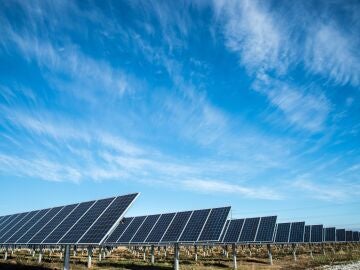
Wind and solar power generated one fifth (22%) of the EU’s electricity last year, with which they surpassed gas for the first time (20%). This is clear from the seventh annual report ‘European Electricity Review’, published on Tuesday by Ember, a ‘think tank’ specializing in energy. The share of coal-fired electricity rose just 1.5 percentage points to generate 16% of EU electricity in 2022, with year-on-year falls in the last four months of the year, as Europe avoided a threat of a return to power. that fossil fuel after the energy crisis derived from the Russian invasion in Ukraine.
“Europe has avoided the worst of the energy crisis,” says Dave Jones, Head of Data Insights at Ember, who adds: “The ‘shocks’ of 2022 only caused a small shock wave in coal-fired electricity production and a huge wave of support for renewables. Any fear of a coal rebound is now dead.”. Ember’s analysis reveals that the EU faced a triple crisis in the electricity sector last year. Just as it was rushing to cut ties with its biggest gas supplier, it was faced with the lowest levels of hydro and nuclear power in at least two decades, creating a shortfall equivalent to 7% of total continental electricity demand in 2022.
Record growth in wind and solar it helped cushion the hydroelectric and nuclear deficit. Solar generation was the one that increased the most, with a record of 39 terawatt-hours (TWh), that is, 24% more in 2022, almost double its previous record, which helped to avoid 10,000 million euros in costs Of gas. Twenty EU countries set new annual records for solar energy, including Spain. This was through effective policies and thanks to European citizens stepping up and deploying rooftop solar on a large scale.
Secondly, lower electricity demand also contributed to reducing the deficitt, as it fell 7.9% in the last quarter of 2022 compared to the same period of the previous year (-56 TWh), a figure close to the 9.6% drop (-61 TWh) registered in the second quarter 2020, when lockdowns were first imposed across much of Europe due to the covid-19 pandemic. The mild climate was a decisive factor, but price pressures likely played a role, along with improvements in energy efficiency and caring action by citizens to reduce energy demand in times of crisis.
On the rise in coal
Only one sixth of the nuclear and hydroelectric deficit was covered by coal. Coal generation increased by 7% (28 TWh more). Emissions from the EU electricity sector increased by 3.9% (26 million tonnes of CO2 more) in 2022 compared to 2021. It could have been much worse: wind, solar and a drop in electricity demand prevented much higher return to coal. For context, the increase in coal was not substantial, as its power remained below 2018 levels and only added 0.3% to global coal generation. Coal-fired electricity in the EU fell in the last four months of 2022, down 6% year-on-year.
The 26 coal plants placed in an emergency situation for the winter worked at an average of only 18% of its capacity. Despite importing an additional 22 million tonnes of coal through 2022, the EU only used one third and the other two thirds remained unused. Countries are just as committed to phasing out coal as they were before the crisis. Perhaps most surprisingly, gas generation was almost flat (+0.8%) in 2022 compared to 2021, despite record prices.
Gas generated 20% of the EU’s electricity in 2022, up from 19% the year before. However, this trend is expected to change drastically this year. On the other hand, the latest indications from the industry suggest that in 2023 the European transition to wind and solar will accelerate in response to the energy crisis, and French hydro and nuclear will recover. As a consequence, Ember estimates that fossil fuel generation could plunge 20% in 2023, twice as much as in 2020. Coal generation will decline and gas generation (which is projected to remain more expensive than coal at least until 2025 ) will be the one that falls the fastest.
“The European transition towards clean energy emerges from this crisis stronger than ever”notes Jones, before noting: “European countries not only remain committed to phasing out coal, but are now striving to phase out gas as well. The energy crisis has undoubtedly accelerated the electricity transition in Europe. Europe is It is rushing towards a clean and electrified economy, and this will become apparent in 2023. Change is fast approaching and everyone must be ready.”
Source: Lasexta
Ricardo is a renowned author and journalist, known for his exceptional writing on top-news stories. He currently works as a writer at the 247 News Agency, where he is known for his ability to deliver breaking news and insightful analysis on the most pressing issues of the day.












